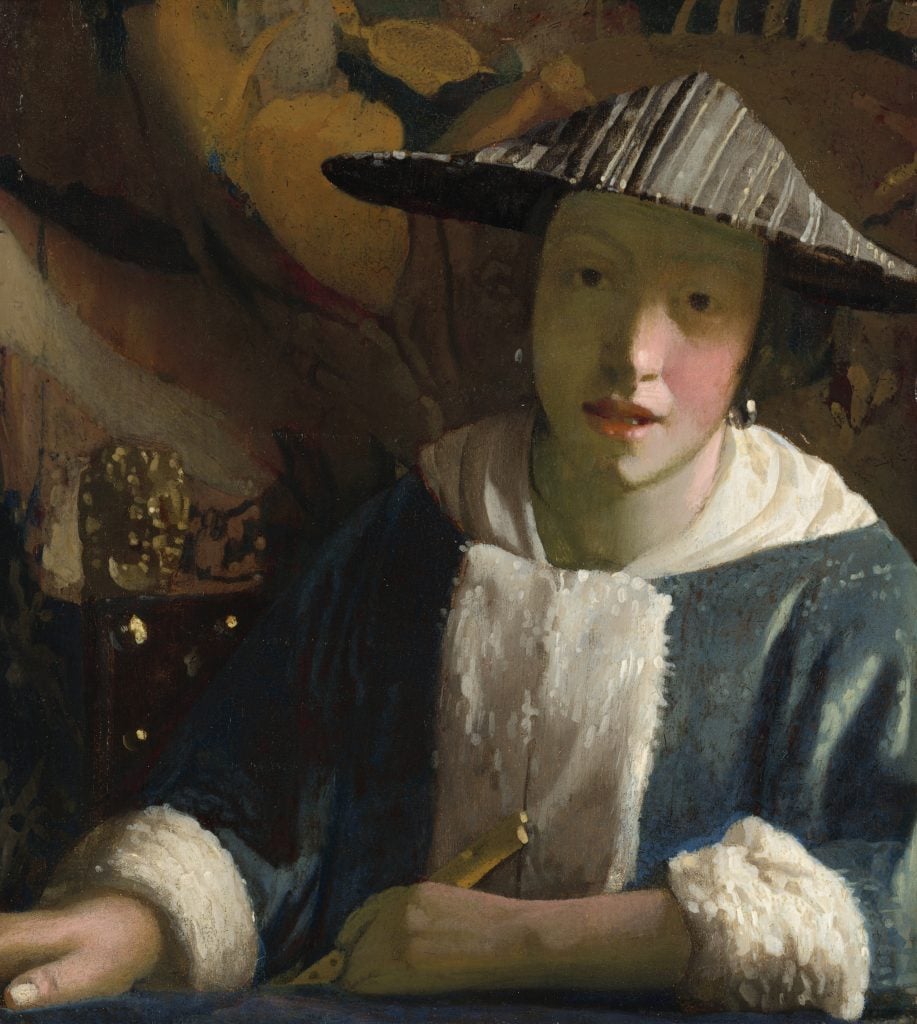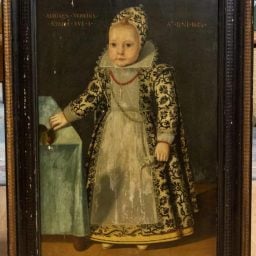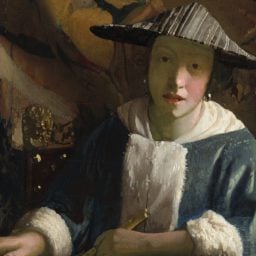Scientists and historians at the National Gallery of Art in Washington, D.C., have deduced that a painting attributed to Johannes Vermeer, one of four in the museum’s collection, wasn’t painted by the Dutch master after all.
Girl With a Flute (1665/1675), a small study of a figure holding a recorder, was instead likely made by someone who studied under Vermeer or otherwise worked closely with him. The new findings unlock the intriguing possibility that the Golden Age artist—whose Girl With a Pearl Earring and other masterpieces rank among the most famous paintings in the world—may have had an apprentice.
As to who that figure might be, National Gallery officials can only speculate. There’s no record of any students registered with the local painters guild, no notes about friends or family members taking lessons. Nevertheless, the museum is now saying, with 99 percent confidence, that this particular painting was produced by “school of Vermeer.”
“The idea that Vermeer had a studio is not one that a lot of people have really talked about. Because he’s always been thought of as the lone genius,” said Marjorie E. Wieseman, curator and head of the department of northern European paintings at the National Gallery. “We only know of about three dozen paintings by him. So why would he have needed a studio?”
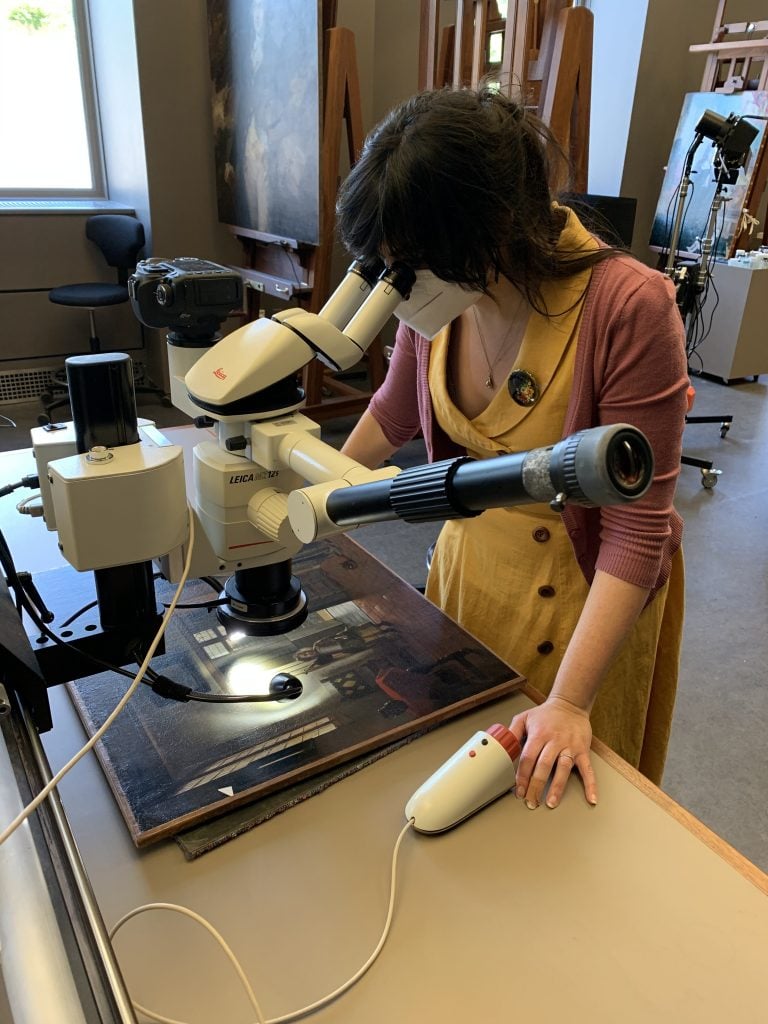
Dina Anchin, associate paintings conservator at the National Gallery of Art, studies a painting.
This discovery is the centerpiece of “Vermeer’s Secrets,” a cerebral, evidence-based exhibit that opens at the Washington, D.C., museum on October 8. Using advanced imaging and sampling technologies, curators and conservators were able to examine the paintings in an unprecedented level of detail, revealing the methods and materials behind the soft glow of Vermeer’s portraits.
The exhibit is the culmination of an investigation that was only possible due to the global pandemic, which caused the National Gallery to close from March 2020 to May 2021. Vermeer’s paintings are simply too popular to take off the walls for lengthy study. Normally, the four works draw crowds on the main floor of the West Building; indeed, even in the short time they were removed from their permanent place to join this special exhibition, viewers noticed their absence.
With the museum’s doors closed to viewers, experts were able to conduct a months-long inspection of the paintings using X-ray fluorescence (XRF) imaging spectroscopy, microsampling analysis, and other techniques. The procedures allow researchers to look closely at pigments and patterns below the surface, even revealing decisions that the artist later redacted.
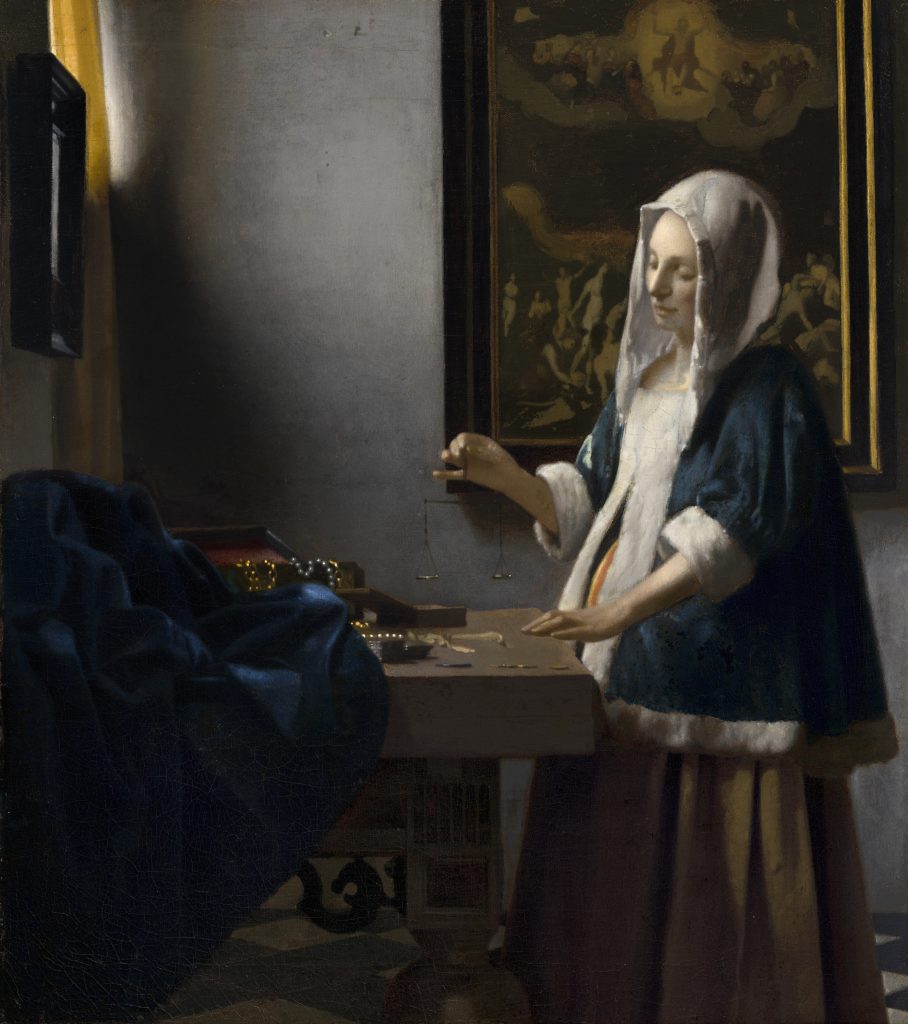
Johannes Vermeer, Woman Holding a Balance (c. 1664). National Gallery of Art, Washington, Widener Collection
Woman Holding a Balance (c. 1664), for example, shows a figure holding a set of scales in perfect equipoise. That wasn’t the artist’s first instinct, though. By penetrating hidden layers of paint, the researchers discovered that the woman’s balance was originally askew. A similar compositional analysis of A Lady Writing (c. 1665) reveals that Vermeer’s subject at one point held her stylus in an upright position, as if she were captured mid-sentence.
The research team at the National Gallery—seven curators, conservators, and image scientists—employed several techniques to survey Vermeer’s layering and sequencing. Using a tactic called false-color infrared reflectance imaging, for example, the team could find evidence of broader, heavier brushstrokes of lead white underneath the soft glow of a wall. And with XRF spectroscopy, they could map out the distribution of elements such as copper in Vermeer’s work.
“We use these two interactive modes: We’re looking at reflected light from the painting of the visible and the infrared, and then the elemental maps,” said John K. Delaney, senior imaging scientist for the National Gallery. “The problem with these techniques is they don’t give you layered stratigraphy. We’re not getting a CT scan.”
In other words, the images can tell researchers what’s under the surface, but not how far under the surface. To get a sense of Vermeer’s layers, they have to turn from screens to the paintings themselves, examining microsamples of the materials used.
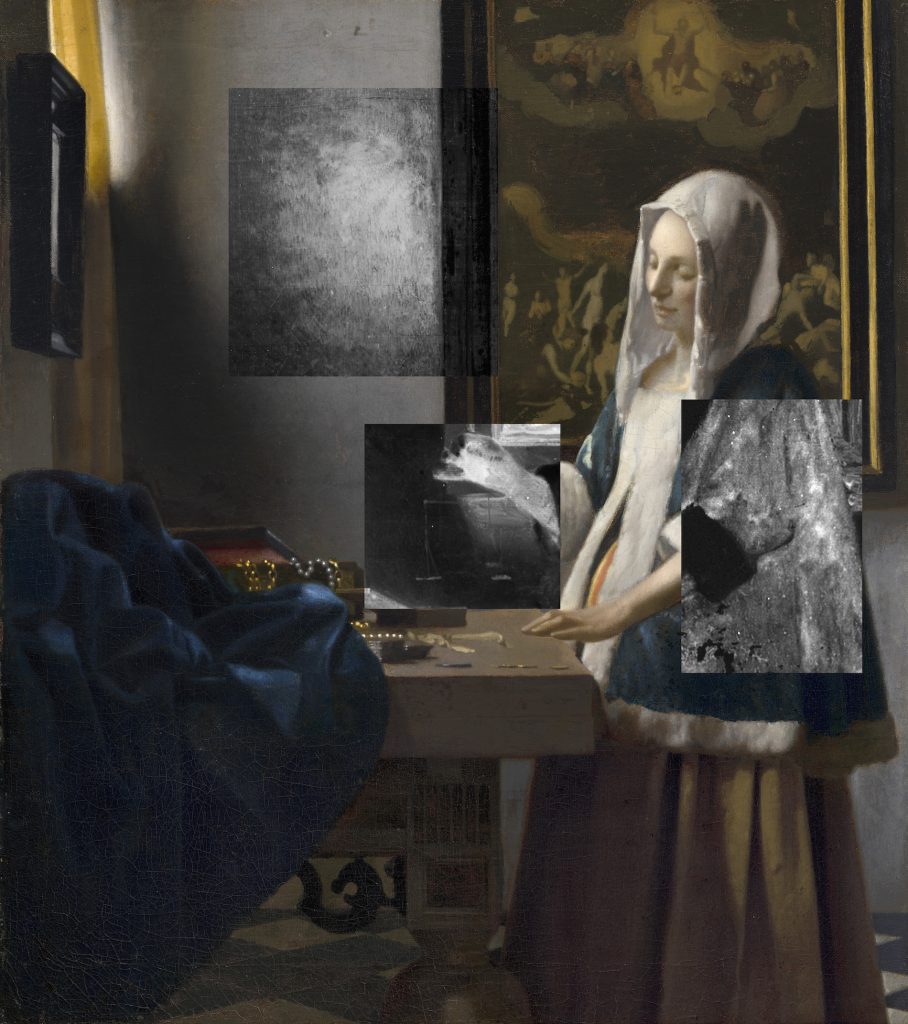
An image visualizing characteristics of the underpaint in Johannes Vermeer’s Woman Holding a Balance (c. 1664): a composite image of the color photograph, infrared reflectance image, and chemical element maps for iron and copper. Photo: National Gallery of Art.
This method of extra-close-up analysis led the National Gallery to realize that one of its Vermeers isn’t a Vermeer.
Wieseman says that Vermeer used an earth green to shadow his subject’s faces. This was a unique practice among Dutch painters of his day, according to Wieseman, so a green shadow in Girl with a Flute would be evidence for attributing the painting to Vermeer. However he typically worked with bigger, more rapid brushstrokes for the underlayer, then smoothed out the surface; microsampling and imaging showed that the artist responsible for Girl with a Flute took the opposite approach.
Vermeer also liked to dapple the lips of his subjects with highlights: tiny dots reflecting a color found nearby. The artist who made Girl With a Flute worked closely enough with Vermeer to witness these techniques, but not to master them. “Rather than having a pink highlight on the lip, she’s got, you know, an errant piece of spinach in her teeth,” the curator said.
Girl With a Flute was only ever “cautiously” attributed to Vermeer, according to the museum, so it may not come as a surprise to researchers that it was done by another artist. But the fact that this mystery artist worked alongside Vermeer raises a lot of new questions. While the museum considers this particular case closed, the investigation points to a deeper mystery about how the artist’s studio actually functioned.
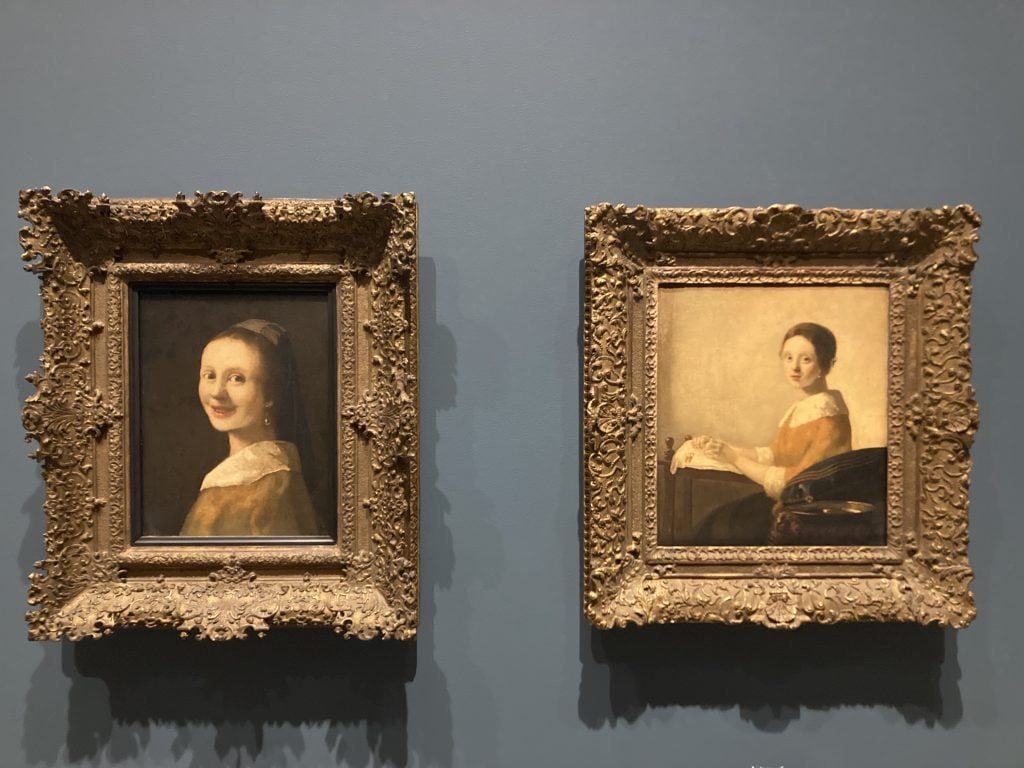
Two unconvincing Vermeer forgeries in the National Gallery exhibition. Photo: Kriston Capps.
Other museums have explored beloved paintings using science: In 2017, the Phillips Collection in Washington, D.C., showcased hidden findings of Renoir’s Luncheon of the Boating Party (1881), for example.
But few museums have been so willing to post their Ls. Alongside its four Vermeer or Vermeer-adjacent paintings, the National Gallery is showing two rarely seen works, acquired by industrialist and patron Andrew Mellon during the original “Vermeer fever” of the 1920s, that have since been proven to be forgeries.
One glance at the disturbing knockoff of Girl With a Pearl Earring on view should have been all that it took to prove its false authorship, but the question was only settled after a thorough study in 1973.
Sometimes the science isn’t necessary.
“One of the challenges, speaking from the curatorial side of things, was finding a way of balancing science with the appreciation of the paintings, the beauty of the surface,” Wieseman. “That’s been really fun.”
“Vermeer’s Secrets” is on view at the National Gallery of Art, West Building, 6th Street and Constitution Avenue NW, Washington, D.C., October 8–January 8, 2022.
